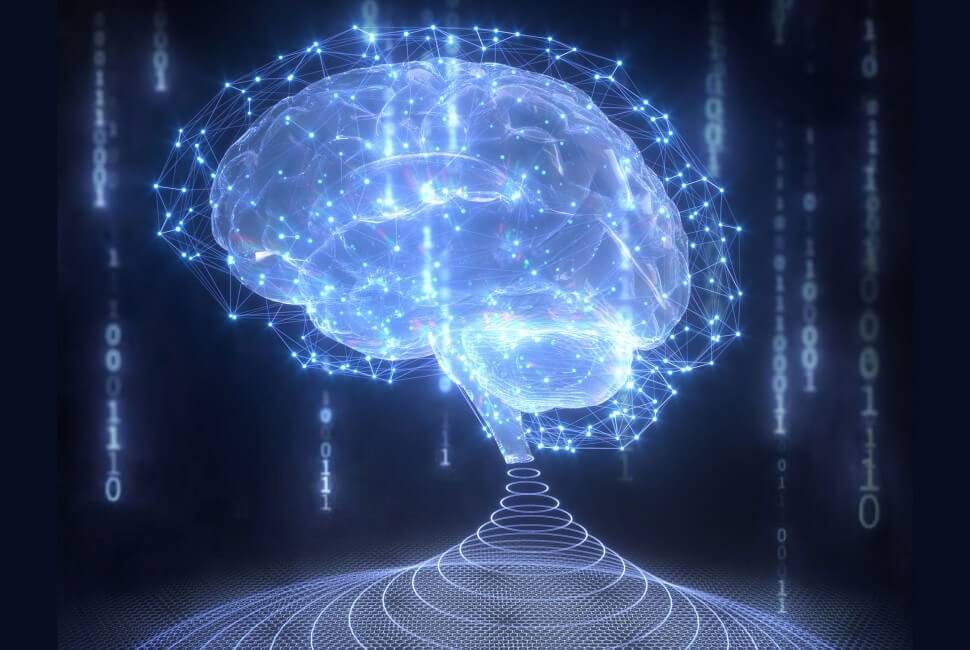EVANSTON, Ill. — Scientists have made a significant leap in the field of artificial intelligence. Researchers from Northwestern University, Boston College, and the Massachusetts Institute of Technology (MIT) have developed a new synaptic transistor that works just like the human brain. This advanced device, capable of both processing and storing information simultaneously, marks a notable shift from traditional machine-learning tasks to performing associative learning — similar to higher-level human cognition.
This study introduces a device that operates effectively at room temperatures, a notable improvement over previous brain-like computing devices that required extremely cold conditions to keep their circuits from overheating. With its fast operation, low energy consumption, and ability to retain information without power, the new transistor is well-suited for real-world applications.
“The brain has a fundamentally different architecture than a digital computer,” says study co-author Mark Hersam, the Walter P. Murphy Professor of Materials Science and Engineering at Northwestern’s McCormick School of Engineering, in a university release. “In a digital computer, data move back and forth between a microprocessor and memory, which consumes a lot of energy and creates a bottleneck when attempting to perform multiple tasks at the same time. On the other hand, in the brain, memory and information processing are co-located and fully integrated, resulting in orders of magnitude higher energy efficiency. Our synaptic transistor similarly achieves concurrent memory and information processing functionality to more faithfully mimic the brain.”
The development of this device comes at a crucial time. As smart devices collect increasing amounts of data, the need for efficient processing methods that don’t overburden power grids has become more pressing. Traditional digital systems, which separate processing and storage, are not energy-efficient for handling large data sets. Although memristors (memory resistors) have been the leading technology for combined processing and memory functions, they still involve energy-intensive switching.

Hersam and his team employed a novel strategy involving moiré patterns, a type of geometric design formed when two patterns are overlaid. By stacking two-dimensional materials like bilayer graphene and hexagonal boron nitride and twisting them to form a moiré pattern, they could manipulate the electronic properties of the graphene layers. This manipulation allowed for the creation of a synaptic transistor with enhanced neuromorphic functionality at room temperature.
“If AI is meant to mimic human thought, one of the lowest-level tasks would be to classify data, which is simply sorting into bins,” explains Hersam. “Our goal is to advance AI technology in the direction of higher-level thinking. Real-world conditions are often more complicated than current AI algorithms can handle, so we tested our new devices under more complicated conditions to verify their advanced capabilities.”
The device’s testing involved training it to recognize patterns and similarities, a form of associative learning. For instance, if trained to identify a pattern like “000,” the transistor could distinguish that “111” is more similar to “000” than “101,” demonstrating a higher level of cognitive function. This ability to process complex and imperfect inputs has significant implications for real-world AI applications, such as improving the reliability of self-driving vehicles in challenging conditions.
“Current AI can be easy to confuse, which can cause major problems in certain contexts,” says Hersam. “Imagine if you are using a self-driving vehicle, and the weather conditions deteriorate. The vehicle might not be able to interpret the more complicated sensor data as well as a human driver could. But even when we gave our transistor imperfect input, it could still identify the correct response.”
The study represents a paradigm shift in electronics, particularly for AI and machine-learning tasks. By moving away from the traditional silicon architecture and exploring the physics of moiré patterns, researchers have opened a new realm of possibilities for computing hardware, paving the way for more sophisticated and energy-efficient AI technologies.
The study is published in the journal Nature.
You might also be interested in:
- Think the brain works like a computer? Scientists pour cold water on that theory
- Should computers be less perfect? Scientists adding human doubt to artificial intelligence
- Living machine? Scientists create biocomputer combining circuits with real human brain tissue


So it begins…